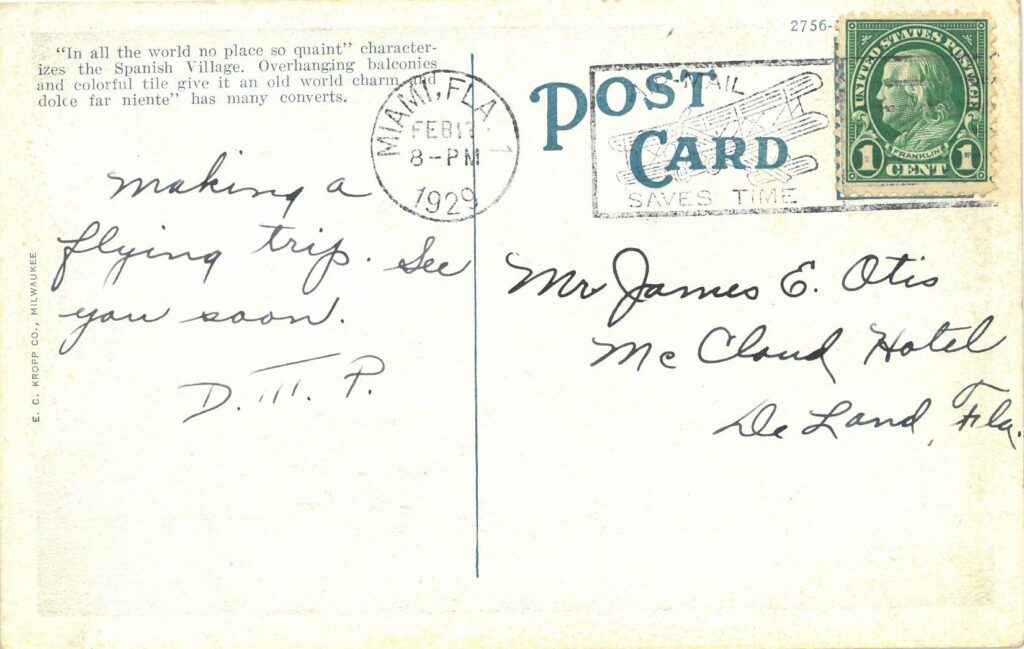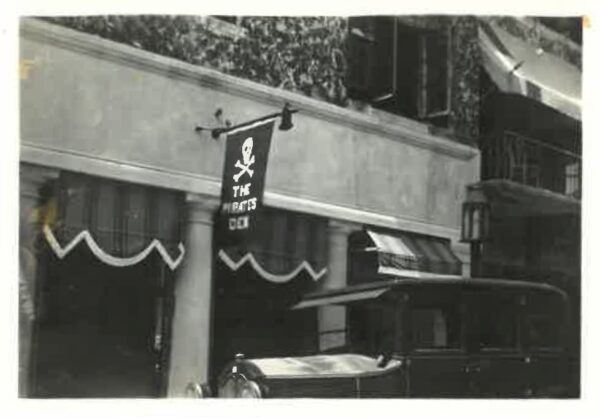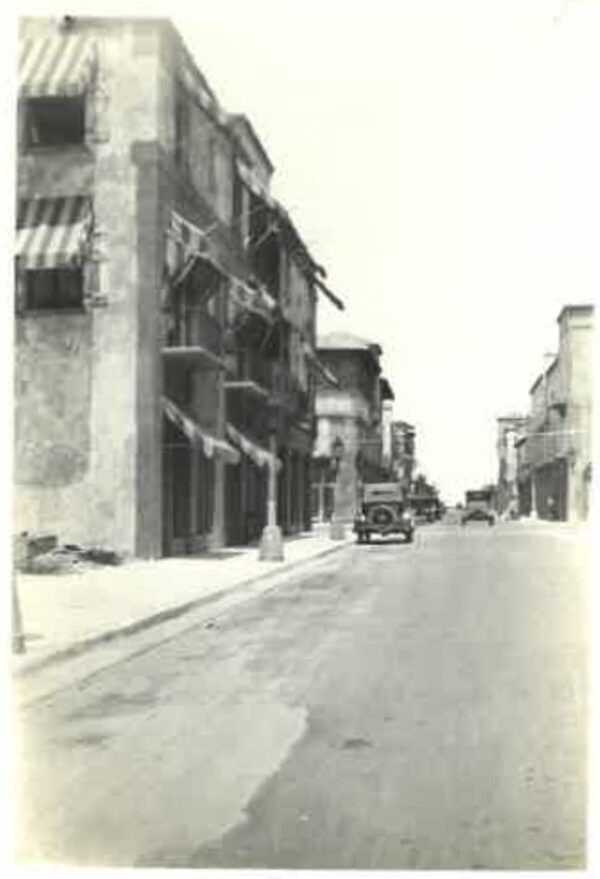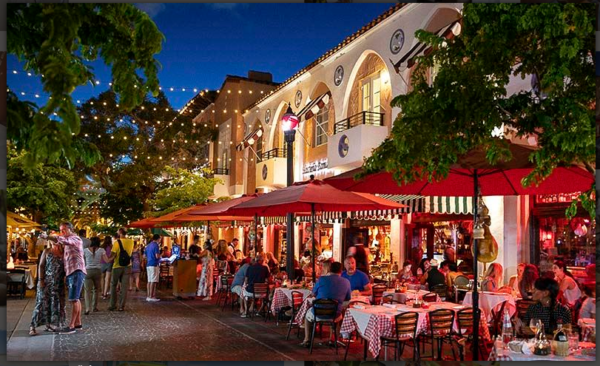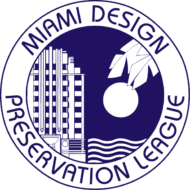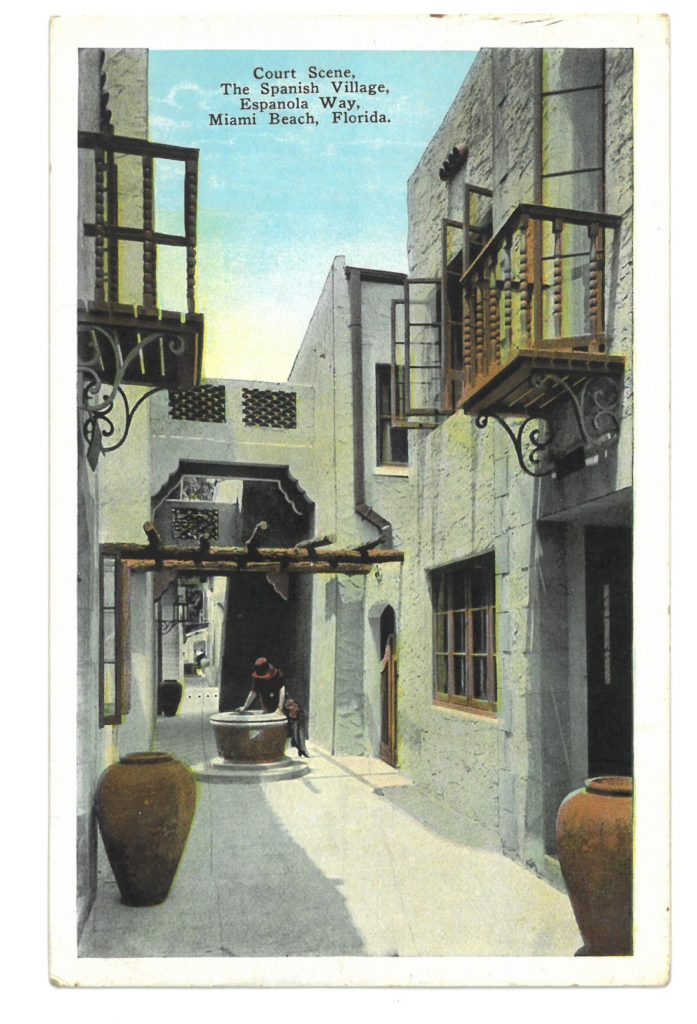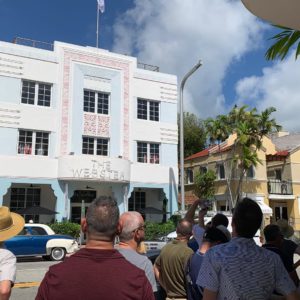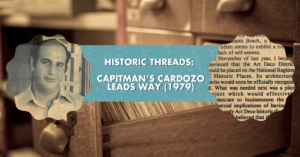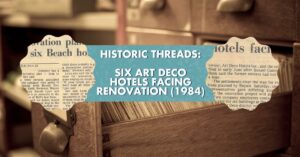Espanola Way Village, which is so popular with tourists and locals now, was the brainchild of developers William Whitman and N.B.T. Roney in the early 1920’s. Originally named The Spanish Village, it was designed by architect Robert Taylor to copy a Mediterranean Village. When built, it was considered an ideal location for the wealthy, such as Harvey Firestone and J.C. Penney, to enjoy a secluded holiday. In the late 1920’s, the area became famous for gamblers like the “Capone Gang”, which included Sonny Capone, Al Capone’s son and Dudley Whitman, the son of William F. Whitman, one of the original developers of Espanola Way. During the Great Depression, the Whitmans “took back” the area from N.B.T. Roney, which subsequently returned to being popular for its street parties and entertainment.
However, by the 1970’s, the area had sunk to dilapidated and vacant buildings. Miami pioneers Linda Polansky and Barbara Capitman had a vision in the 1980s of restoring the area to its original state. Linda Polansky started her own real estate firm with her first big deal being the brokering of the sale of the Cardozo Hotel on Ocean Drive to Andrew Capitman’s group in June of 1979. Linda used the commission from the Cardozo sale to purchase the Clay Hotel on Espanola Way and operated it as a youth hostel for many years. In addition, she was able to purchase a large portion of the area, determined to restore it to its former splendor. The Polansky Restoration Group was able to accomplish this feat by 1986. The Hollywood producers of Miami Vice also gave the area the extra boost it needed to restore its reputation of a destination for tourists to visit. Some films made on Espanola Way included The Specialist, Burn Notice and The Birdcage. Espanola Way was recently restored in 2019 and made more beautiful than ever.
Shown are the front and back of 1929 postcard of Espanola Way, 1920’s vintage photographs of a tea room called the “Pirate’s Den”, a street scene and a 1970’s photograph of Espanola Way before its restoration donated by Nancy Liebman.
